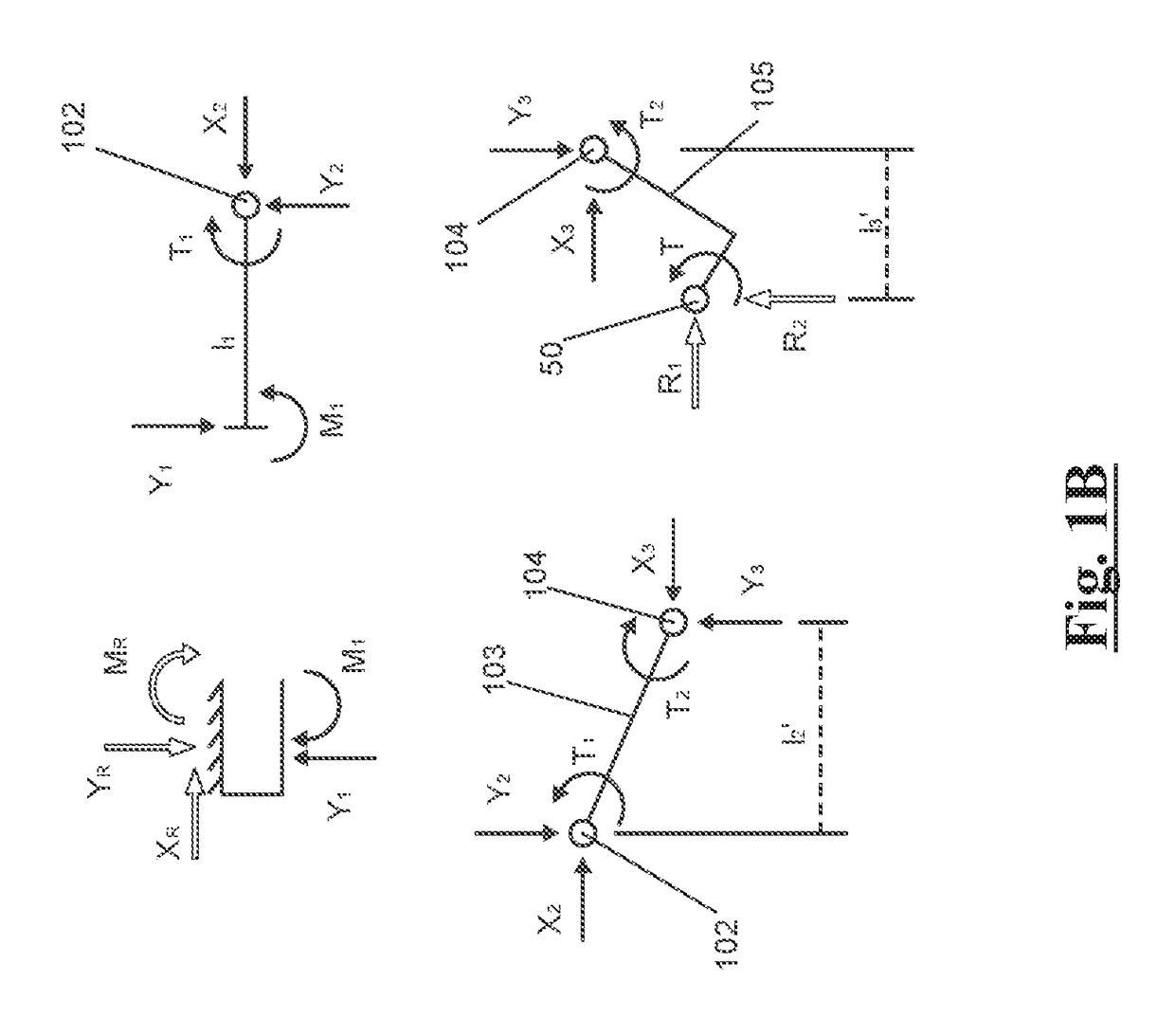Wearable exoskeleton device for hand rehabilitation
a technology of hand and arm, which is applied in the field of wearable mechatronic exoskeleton for neurorehabilitation, can solve the problems of affecting affecting the safety of the human user, and introducing too many constraints to the mechanical structure of the device, so as to achieve the effect of facilitating the flexion/extension of the hand joints
- Summary
- Abstract
- Description
- Claims
- Application Information
AI Technical Summary
Benefits of technology
Problems solved by technology
Method used
Image
Examples
Embodiment Construction
[0098]In FIG. 1A a diagrammatical view is shown of an exoskeleton device 100, according to the invention, for assisting the movement of a metacarpal-phalangeal joint 50, i.e. between the metacarpal bone and proximal phalanx of the finger of a hand in a flexion / extension plane of the joint same. The exoskeleton device 100 comprises:[0099]a metacarpal support 150 arranged to be kept integral to a metacarpal portion of the hand;[0100]a slide 101 arranged to provide an axial sliding movement along a predetermined line γ with respect to the metacarpal support 150;[0101]a stiff link 103 pivotally connected to the slide 101 by a first pivotal constraint 102;[0102]a phalangeal support 105 pivotally connected to the stiff link 103 by a second pivotal constraint 104;[0103]an actuating means for causing a first rotation to the stiff link 103 and a second rotation to the phalangeal support 105 respectively at the first 102 and second 104 pivotal constraint.
[0104]The presence of the slide 101 pr...
PUM
 Login to View More
Login to View More Abstract
Description
Claims
Application Information
 Login to View More
Login to View More - R&D
- Intellectual Property
- Life Sciences
- Materials
- Tech Scout
- Unparalleled Data Quality
- Higher Quality Content
- 60% Fewer Hallucinations
Browse by: Latest US Patents, China's latest patents, Technical Efficacy Thesaurus, Application Domain, Technology Topic, Popular Technical Reports.
© 2025 PatSnap. All rights reserved.Legal|Privacy policy|Modern Slavery Act Transparency Statement|Sitemap|About US| Contact US: help@patsnap.com



